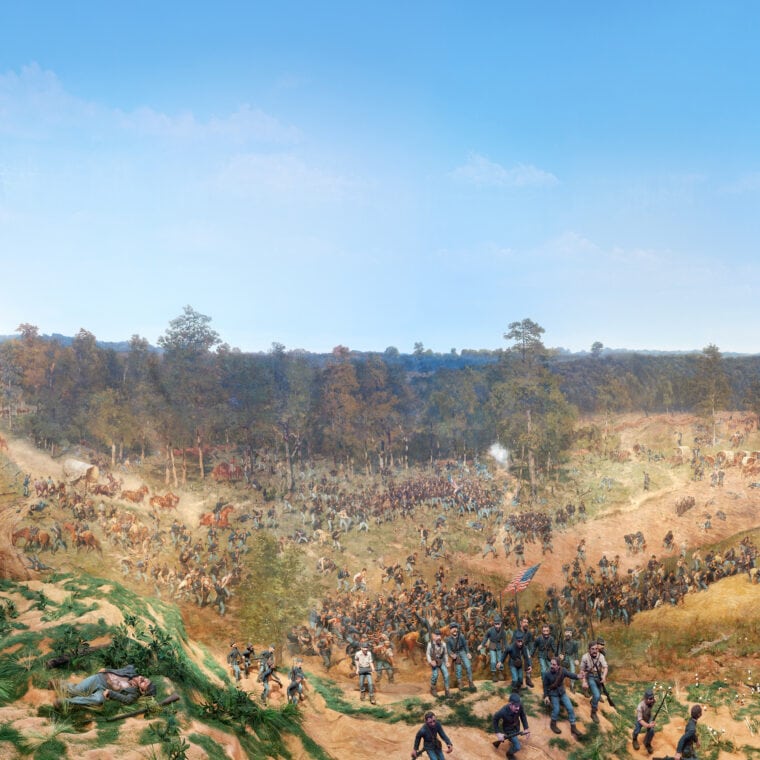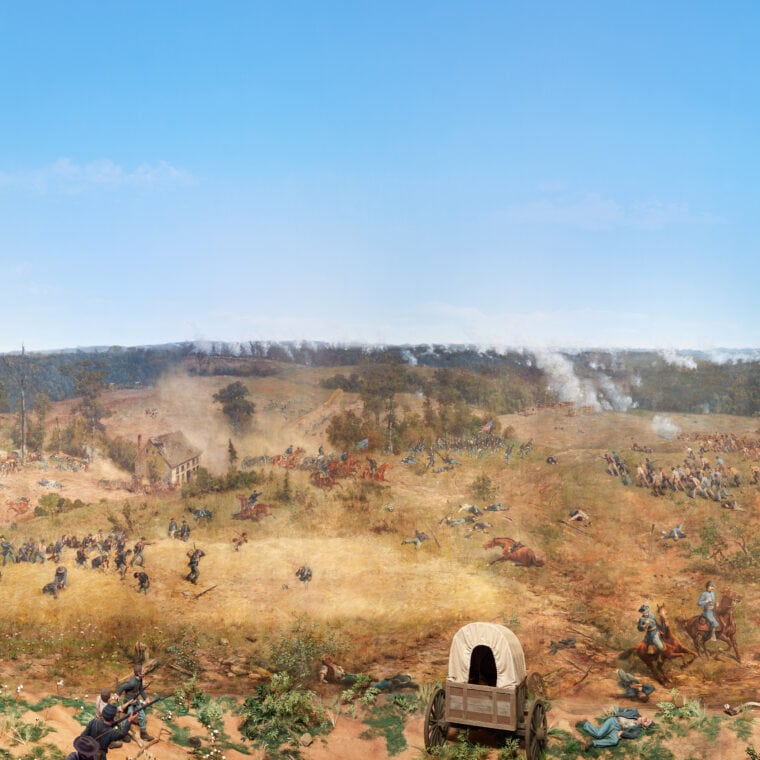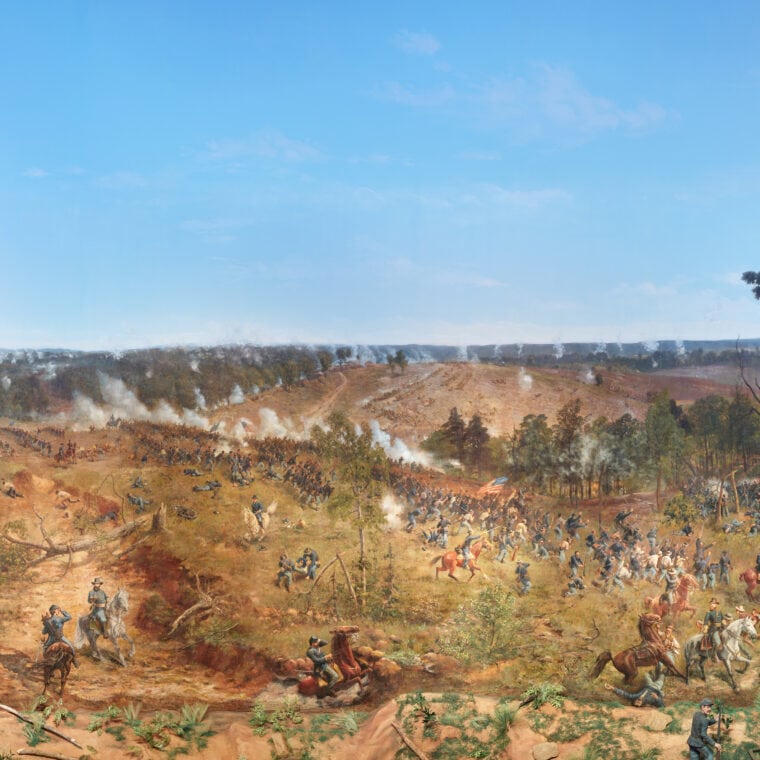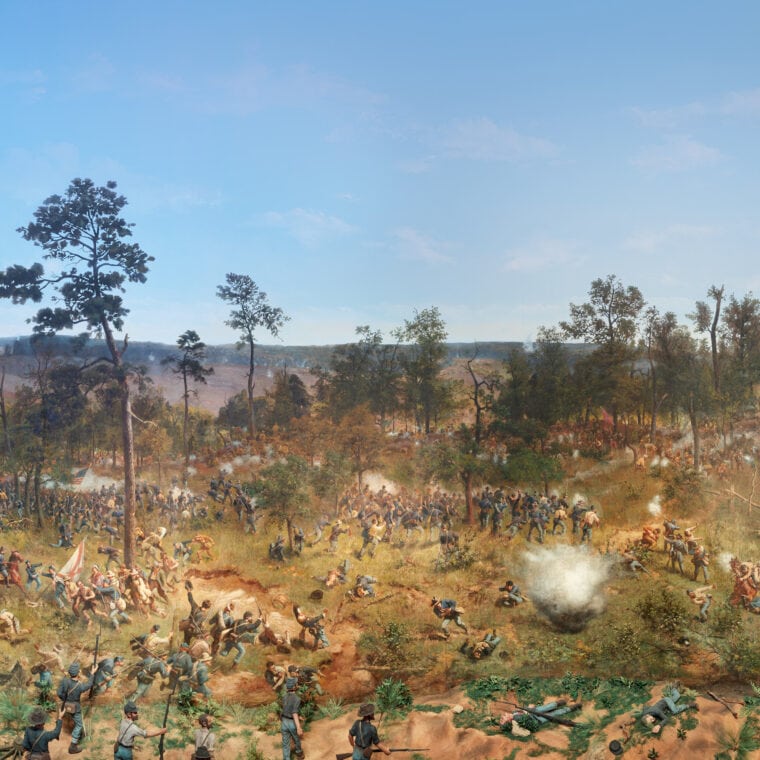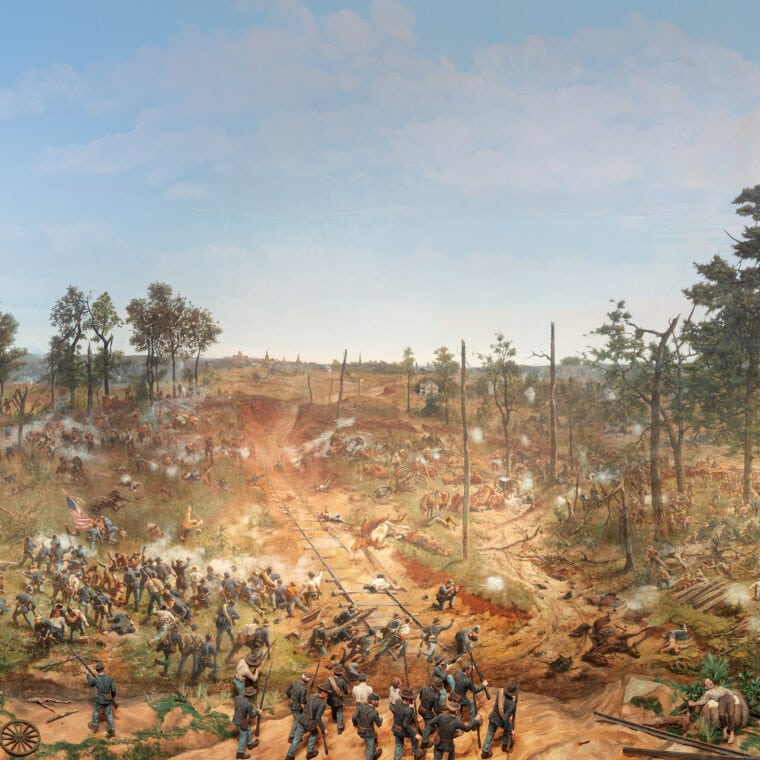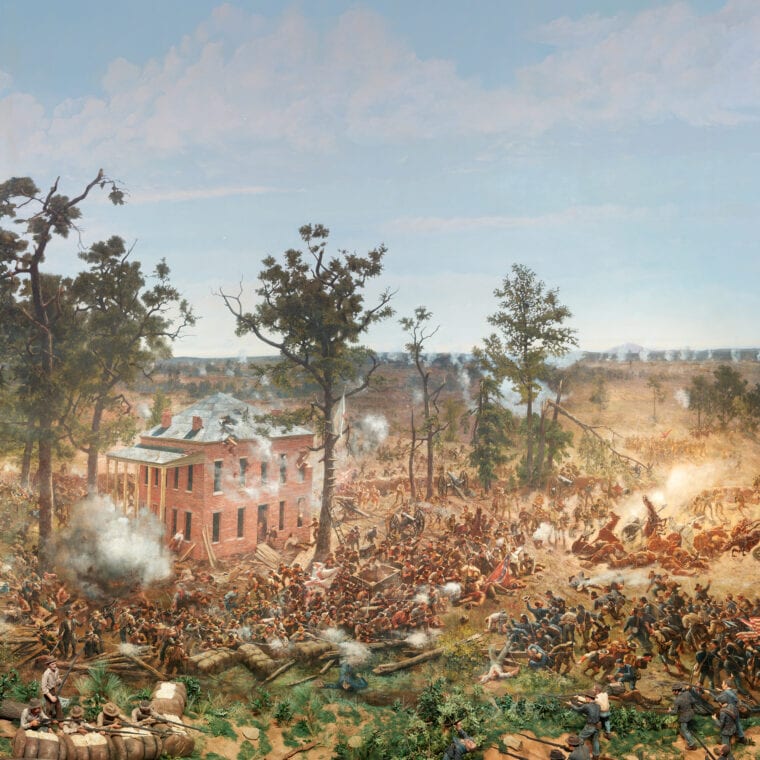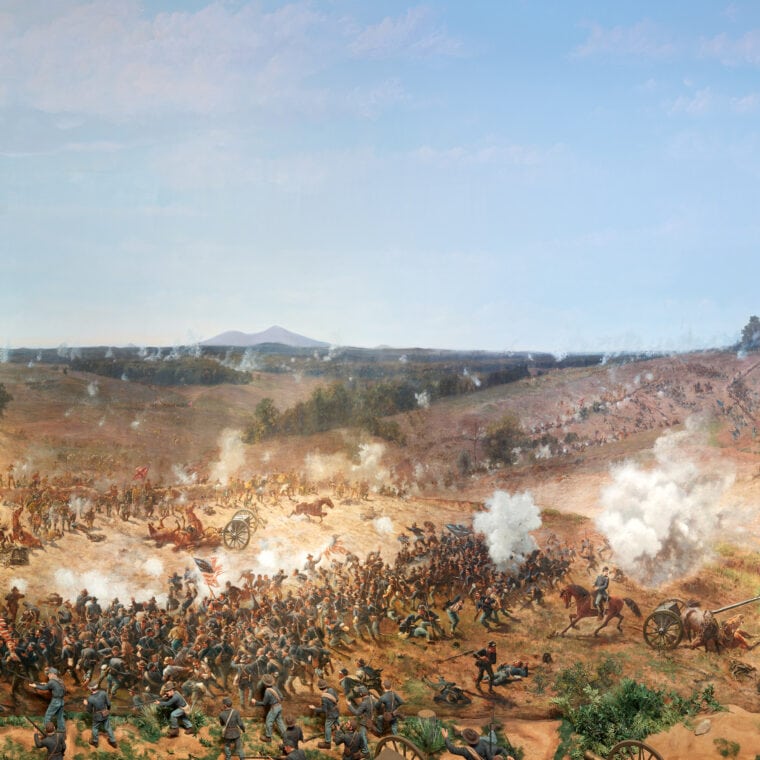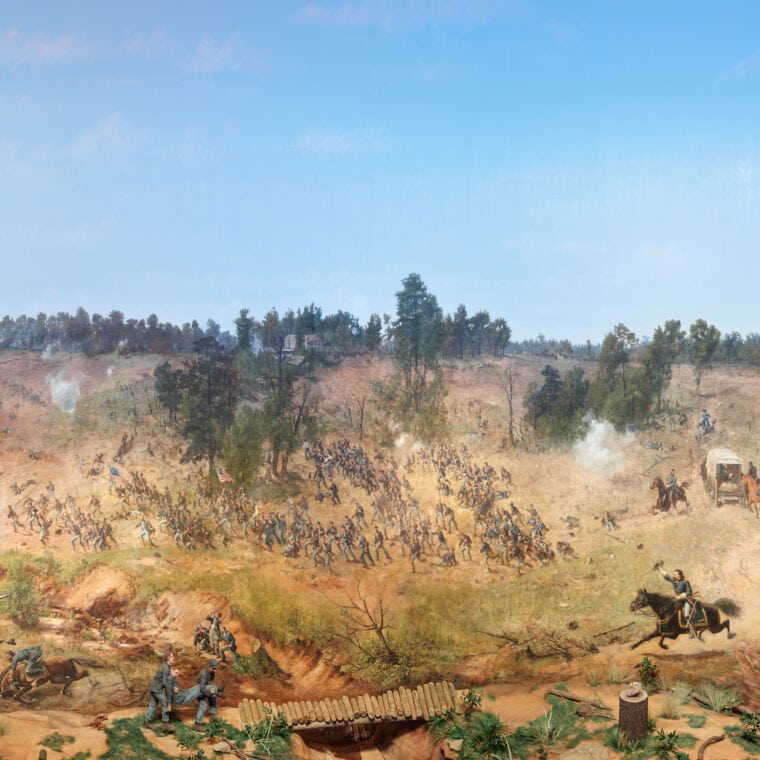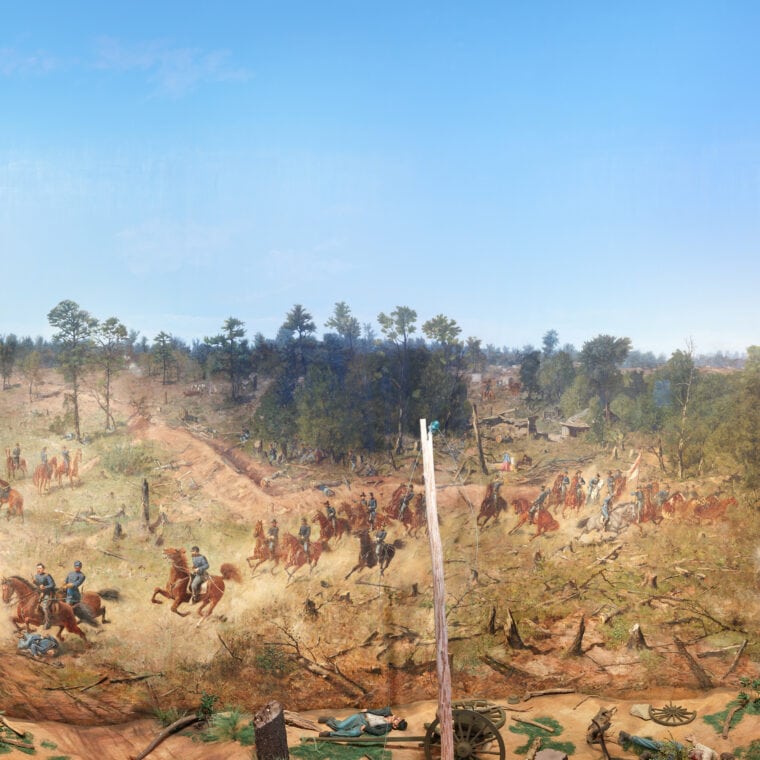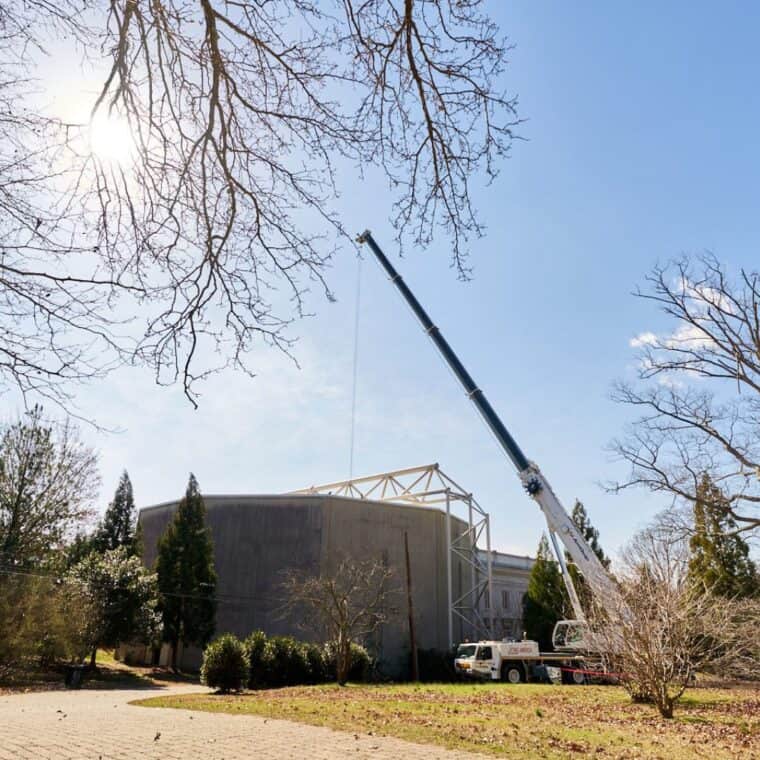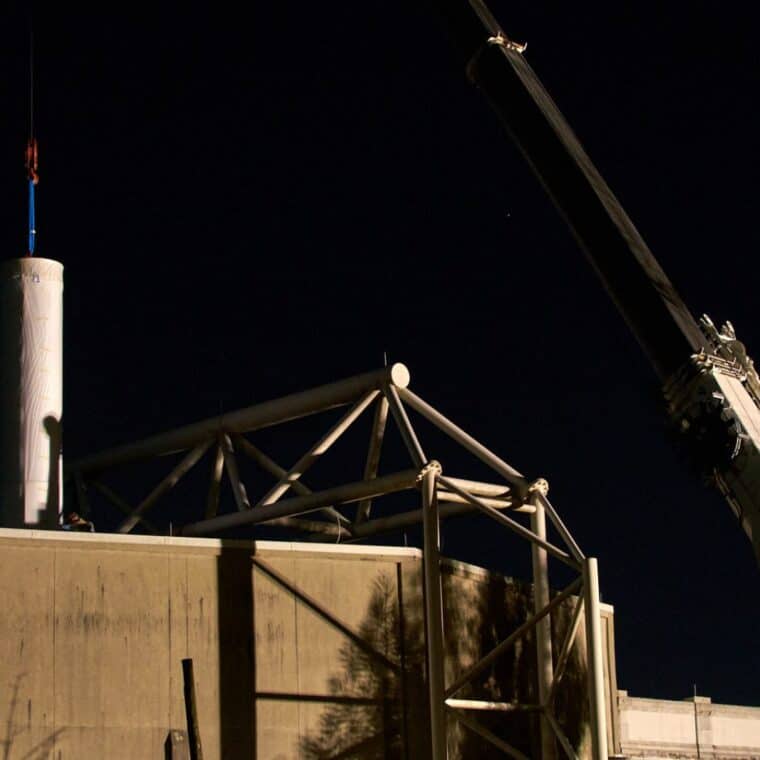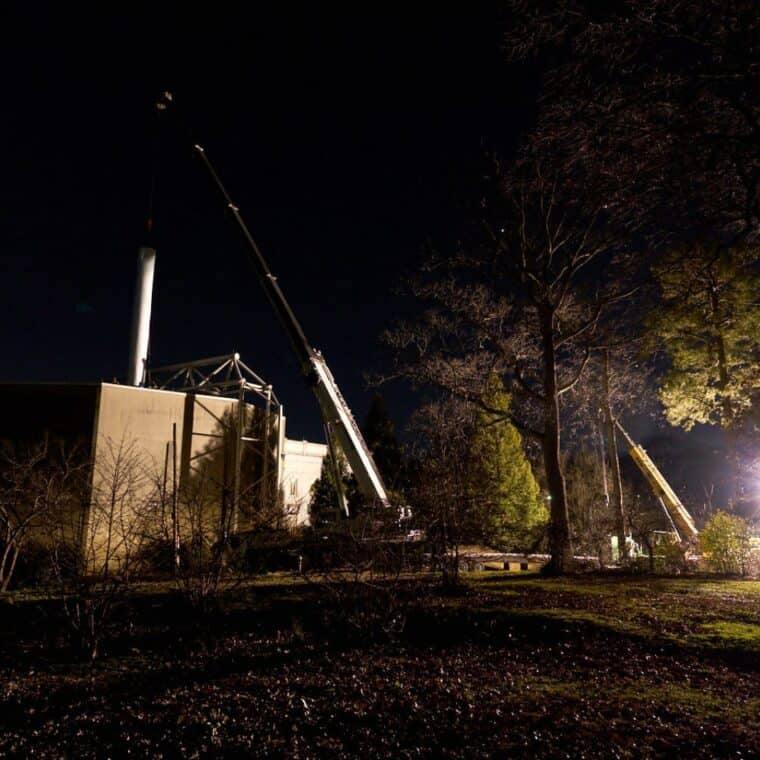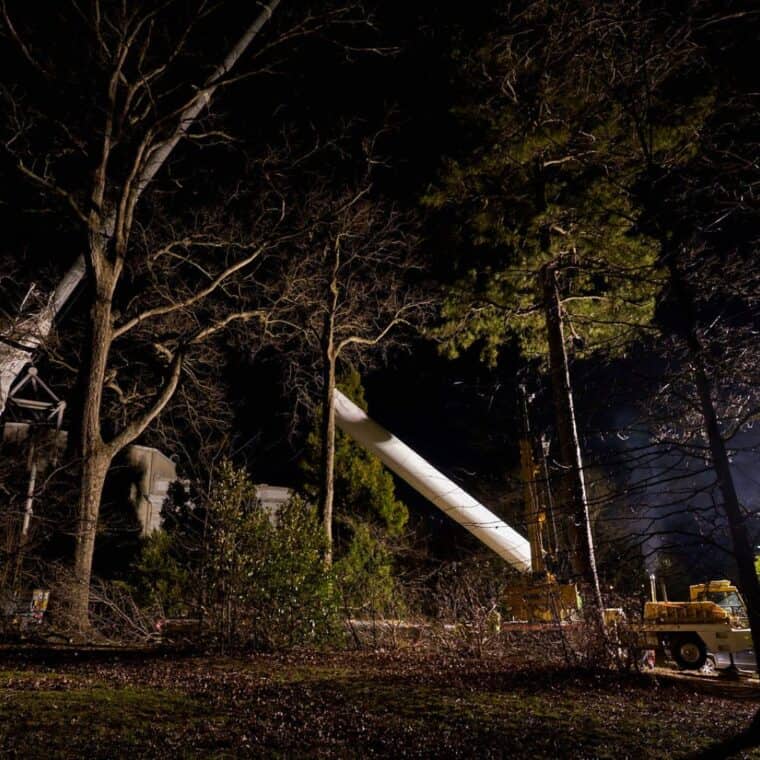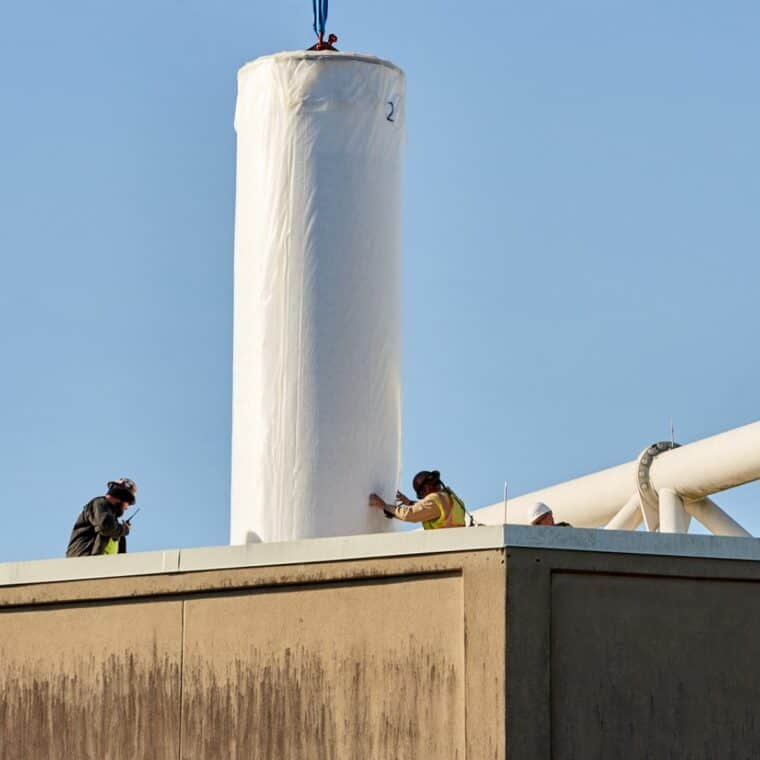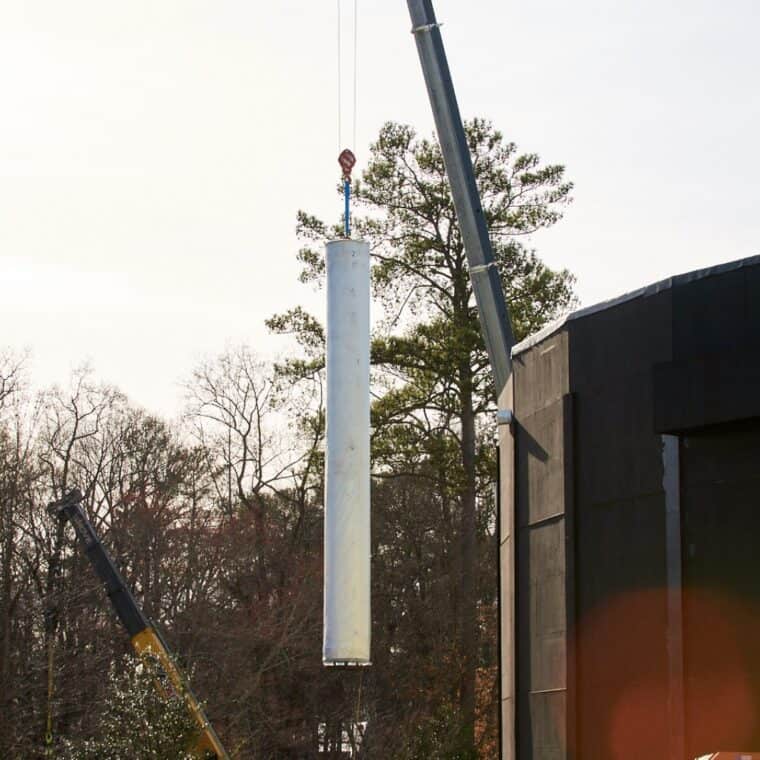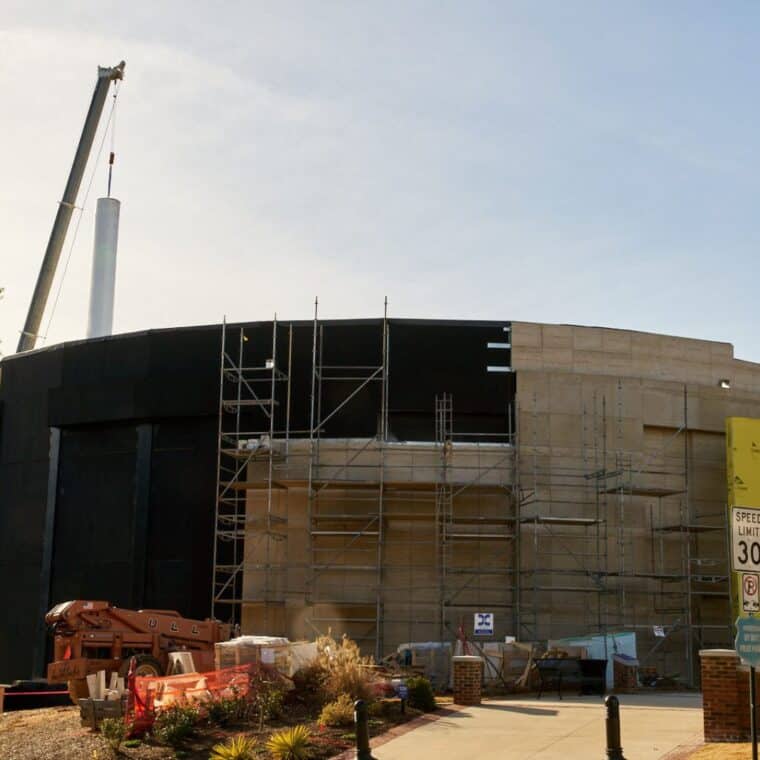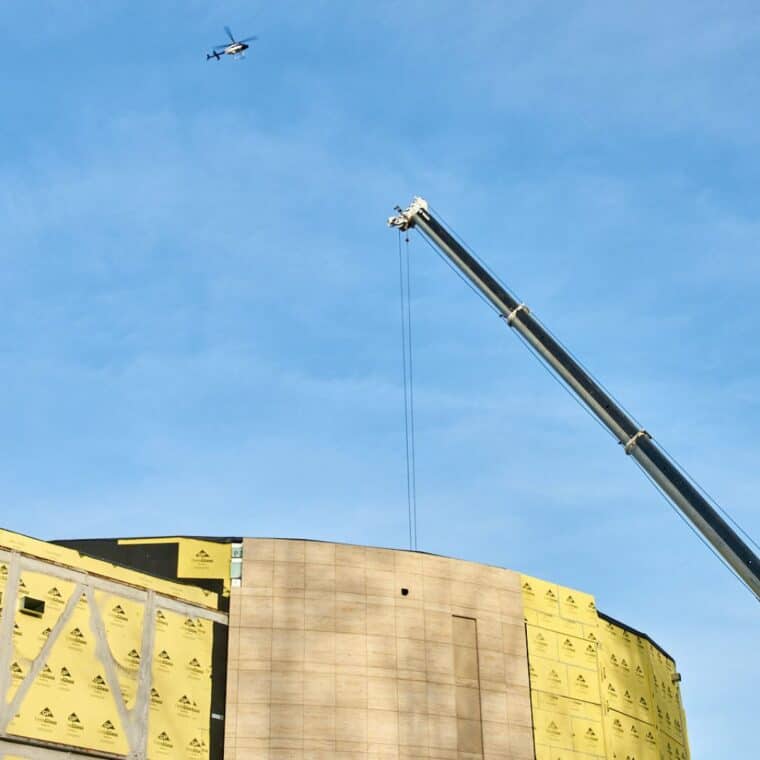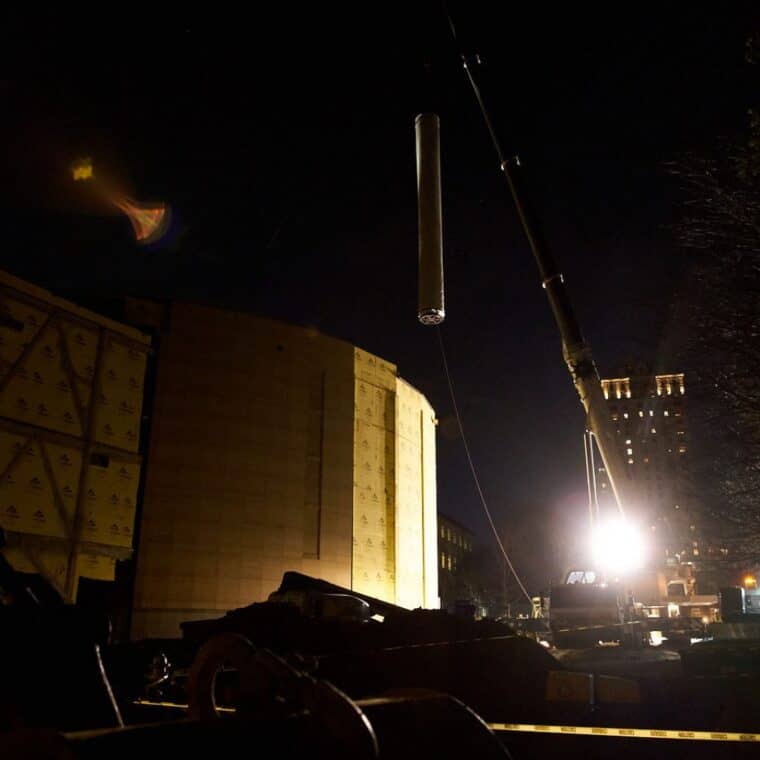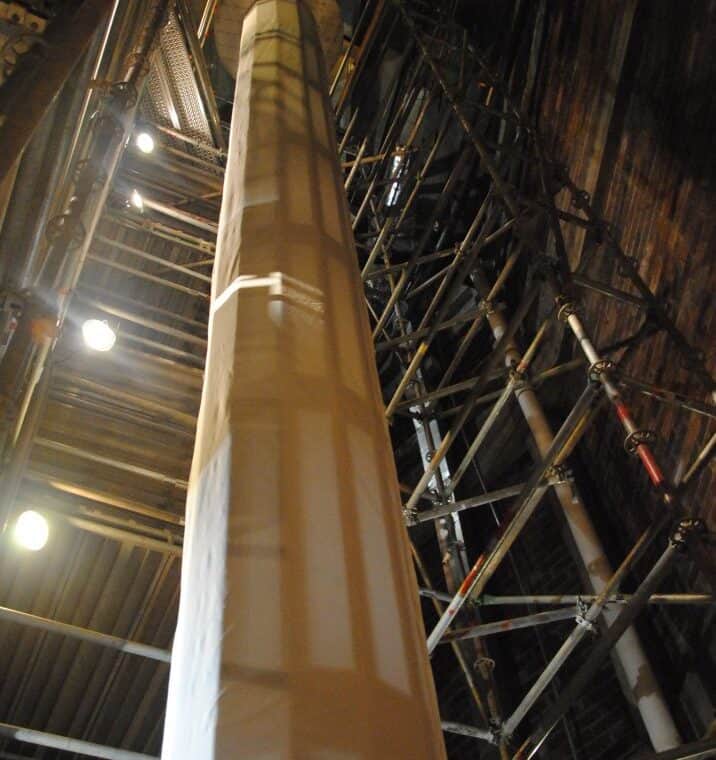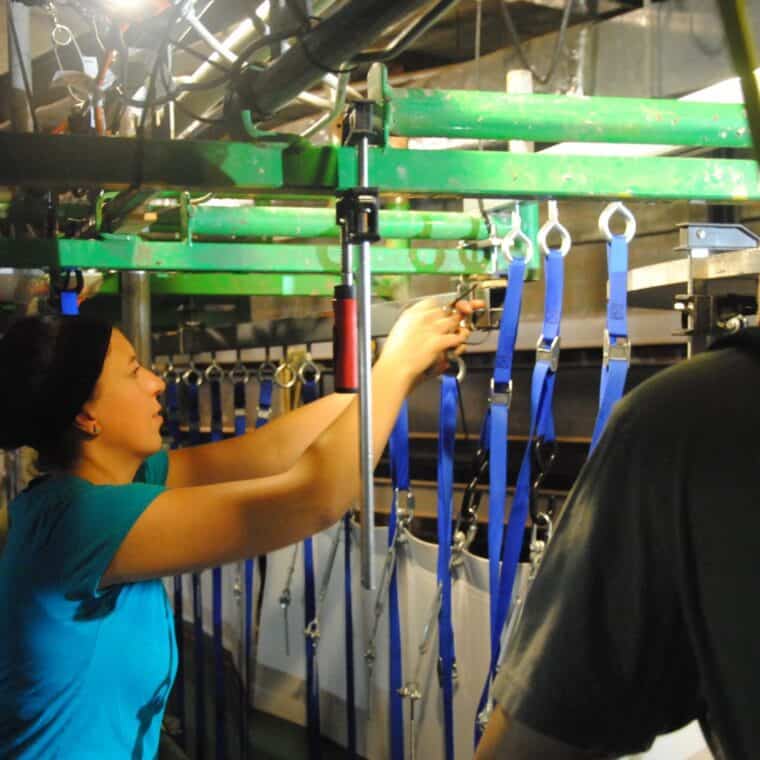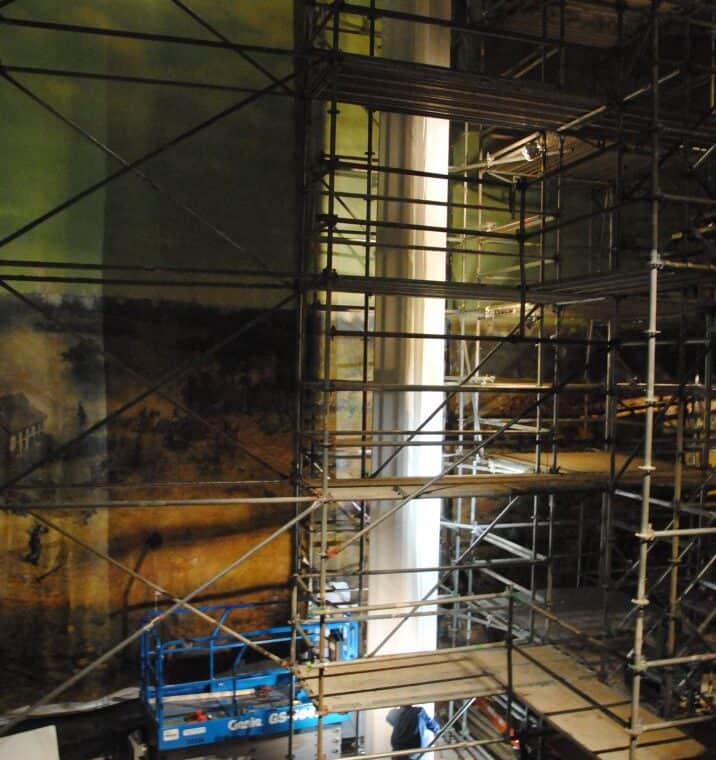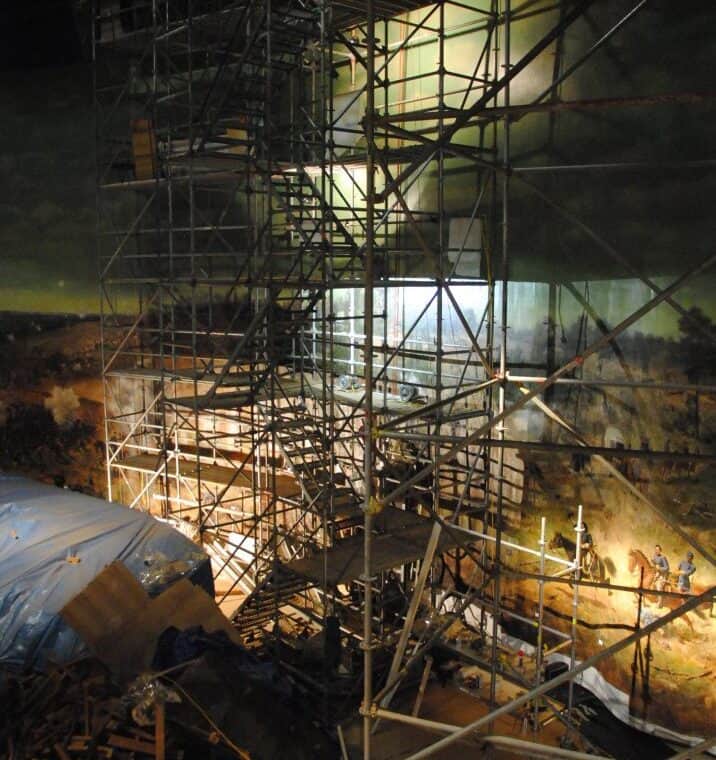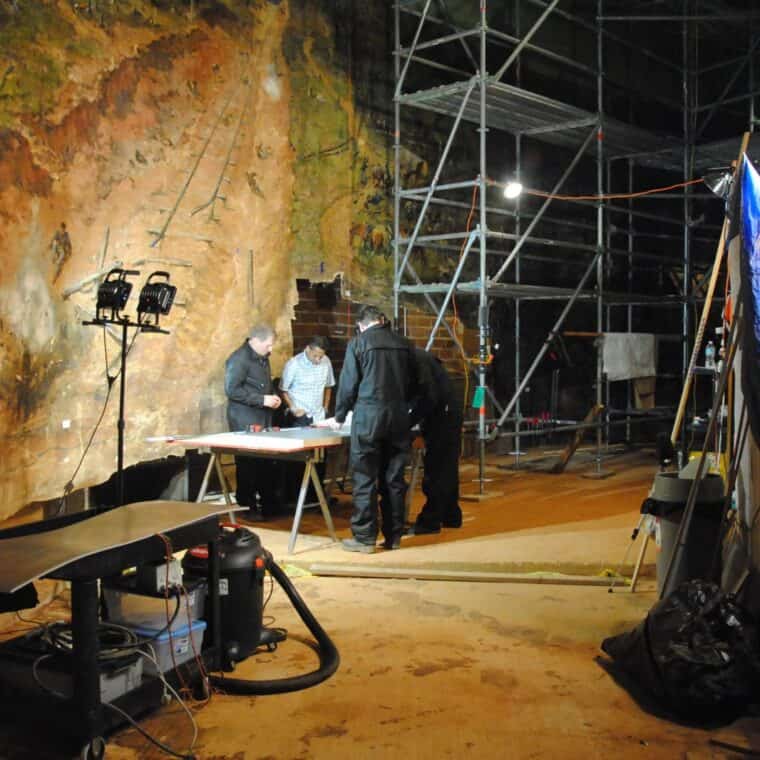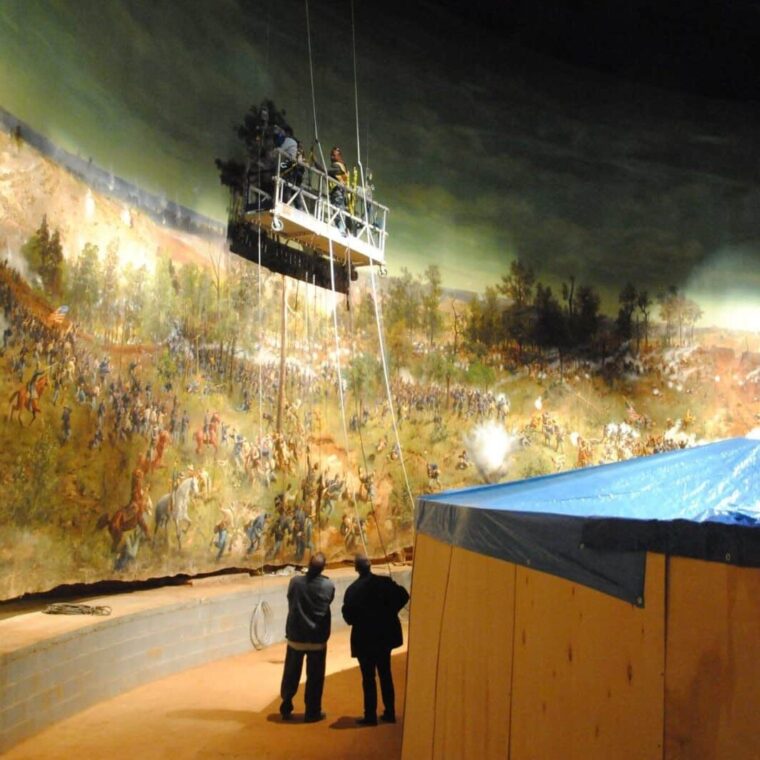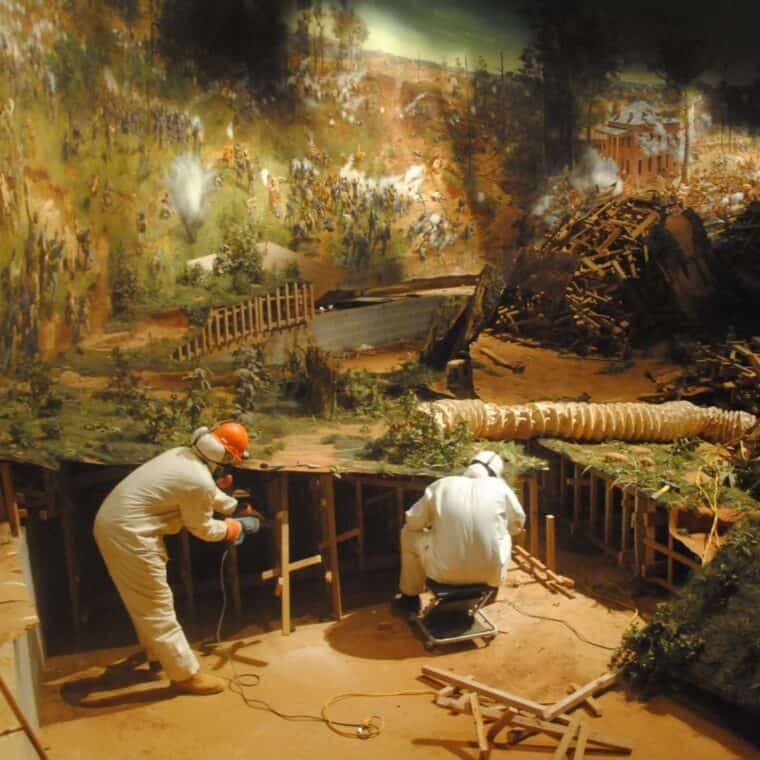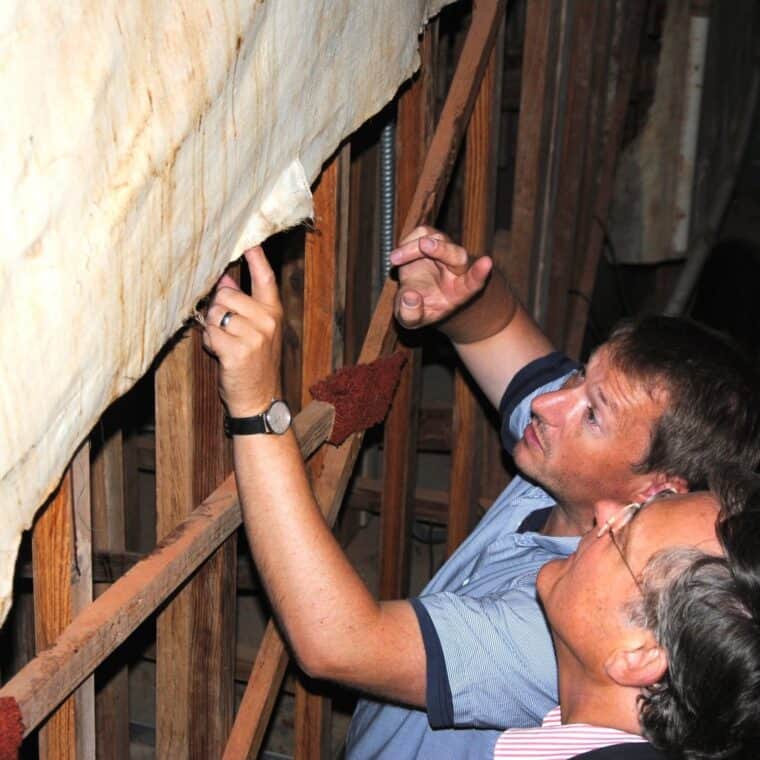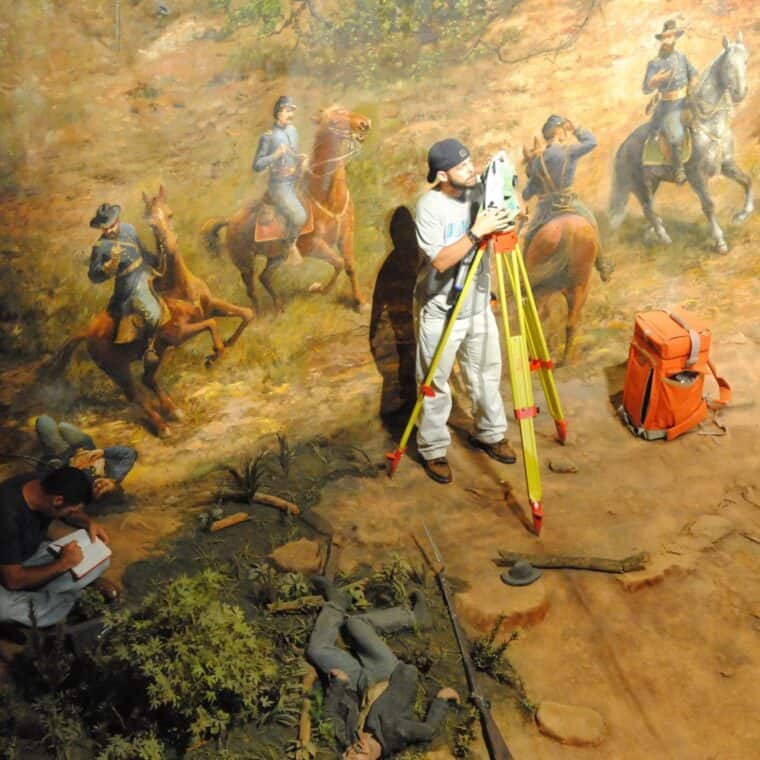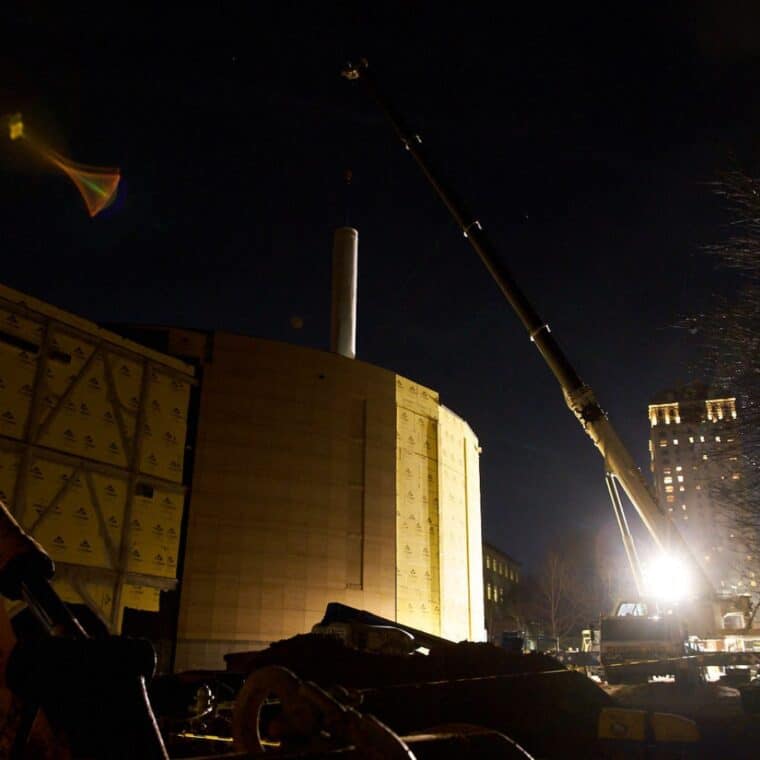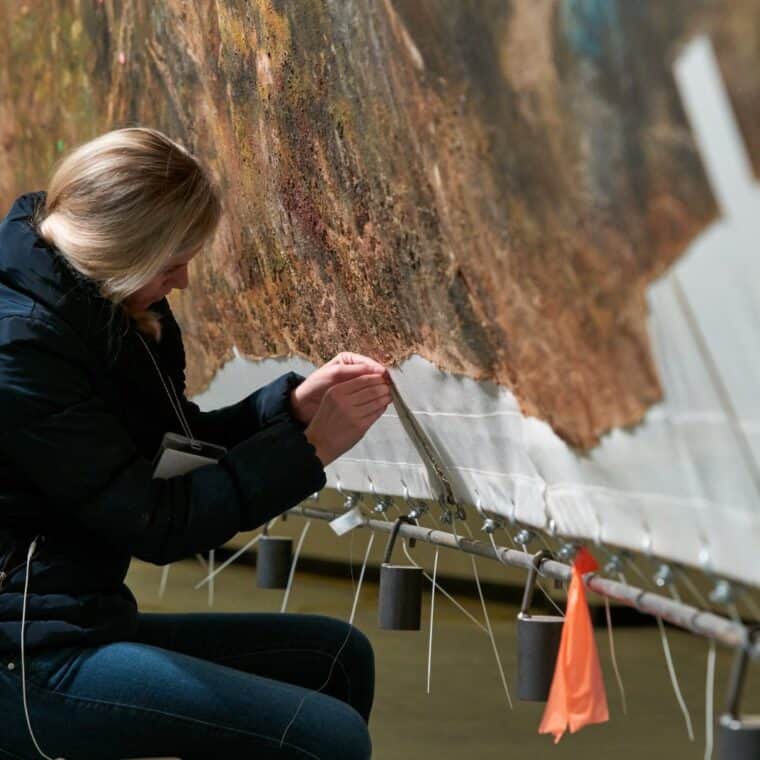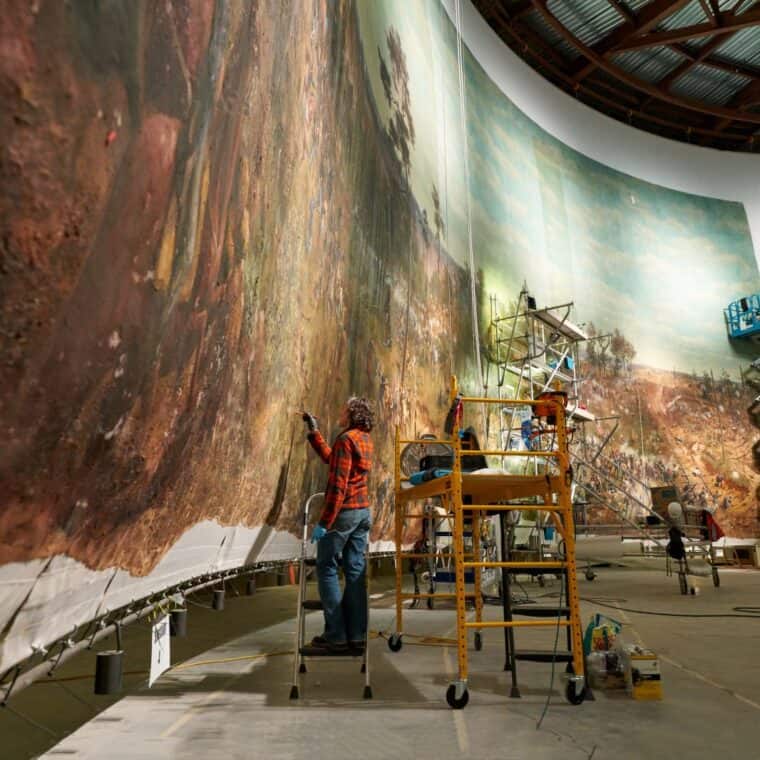Admission is included with general admission to Atlanta History Center. A 12-minute film is projected onto the painting every hour beginning at 10am Tuesday–Sunday. The last presentation is at 3pm daily.
On February 22, 2019, Atlanta History Center opened Cyclorama: The Big Picture, featuring the fully restored cyclorama painting, The Battle of Atlanta.
At the centerpiece of this new multi-media experience is a 138-year-old hand-painted work of art that stands 49 feet tall, is longer than a football field, and weighs 10,000 pounds. This painting is one of only two cycloramas in the United States—the other being the Battle of Gettysburg cyclorama —making Atlanta home to one of America’s largest historic treasures.
In the 1880s, The Battle of Atlanta cyclorama painting was an immersive experience—the equivalent of virtual reality today. The painting is a full-color, three-dimensional illusion designed to transport the viewer onto the battlefield. Cycloramas were created as a form of entertainment—they were the IMAX of their time. The painting was a visual story about the 1864 Battle of Atlanta, but over time it has evolved into a significant artifact that has its own fascinating story. Now, the historical journey of the painting itself is part of the ‘big picture’.
Created at the American Panorama Company in Milwaukee by 17 German artists, The Battle of Atlanta cyclorama took five months to create before it debuted in Minneapolis in 1886. Painted 22 years after the Battle of Atlanta, the painting originally depicted the battle from a Northern perspective as a heroic Union victory so that it would appeal to Northern audiences. When the painting relocated to Atlanta in 1892, it was slightly modified and advertised as “the only Confederate victory ever painted” to appeal to its new Southern audiences that maintained Confederate sympathies. The 1864 Battle of Atlanta was not a Confederate victory, and most of these changes from 1892 were reversed in the 1930s.
In the 127 years that it has been on display in Atlanta, it has been the subject of periodic interpretation. At times, it was seen as a proud symbol of the capital of the New South rising from the ashes left by General William T. Sherman. It has also been criticized as an anachronism meant to glorify the “Lost Cause” of the Confederacy. Perceptions of history, and the painting itself, have depended on the eye of the beholder, as audiences viewed it in different times and places.
Visitors will now see The Battle of Atlanta cyclorama painting as it was originally intended to be viewed—an experience no one has seen or felt in nearly 100 years.
Atlanta History Center uses this restored work of art and entertainment, and the history of the painting itself, as a tool to talk about the ‘big picture.’ How can perceptions, memory and interpretations be shaped, or mis-shaped, by a combination of art and entertainment, myth and memory, cultural context, and current events during different eras?
Through exhibitions, rare artifacts, historic images, immersive technology, digital resources, videos, and museum theatre, visitors are encouraged to look critically at a range of Civil War imagery and consider how images and entertainment can shape how we see history.
Using historical evidence, Atlanta History Center highlights the painting through a variety of lenses and experiences designed to offer a 360-degree perspective of our shared history through Atlanta’s largest painting, using Civil War imagery as a tool.
The Civil War in Georgia
The Civil War in Georgia is an animated map that displays U.S. and Confederate Army movements across the state. The timeline begins in May 1864 and runs through May 1865. The map includes the Atlanta Campaign, Sherman’s March to the Sea, and culminates in the capture of Confederate President Jefferson Davis in south Georgia.
The Civil War in Georgia is generously funded by Sarah Kenan Kennedy.
How does imagery shape history?
Photography, art, movies, and media all provoke emotions, and have the ability to produce biased, or incomplete ideas about historical events. They do not always provide the full perspective of events and people. What stories are not shown? What voices are not heard? And why?
Bugle and mouthpiece. (ca. 1860)
Visitors are greeted by an introductory video as they enter Cyclorama: The Big Picture. Two levels of exhibitions look at truths and myths of the Civil War; explore the untold stories of the painting; examine the role movies and visual entertainment have on shaping perspectives of the Civil War; and provides a look at the fleeting entertainment sensation of cycloramas.
Guests enter the painting rotunda through a 7-foot-tall tunnel entry—passing underneath the diorama—before ascending an escalator to the 15-foot-tall stationary viewing platform. Here visitors get a full 360-degree view of the painting, enhanced by technology and a 12 minute theatrical, larger-than-life presentation projected onto the painting.
Additional Information
Press Release – Preparation for Monumental Move
FAQs on The Battle of Atlanta Cyclorama Move
Timeline of The Battle of Atlanta Painting
Related Content. Learn More.
-
Interactive Map
War in Our Backyards uses today’s technology to help readers understand and connect Atlanta’s summer of 1864, months that changed American history forever.
-
The history of this 150-year-old immersive painting at the Atlanta History Museum features a scheming promoter, the cast of Gone with the Wind, Atlanta’s first Black mayor, and the voice of Darth Vader himself – and shows how our interpretations of art reflect the time in which we live.
-
Exhibition
The Civil War is the decisive turning point in American history. A nation divided against itself before—half enslaved, half free—was reunited. Experience the Civil War through the eyes of soldiers and civilians.
-
Exhibition
Atlanta History Center is home to one of the nation’s most comprehensive collections of Civil War memorabilia including a growing number of rare objects identified specifically with African American USCT soldiers and regiments such as a canteen, swords, a rifle, brass drum, knapsack, Bible, badges, a Medal of Honor, and a USCT flag.


